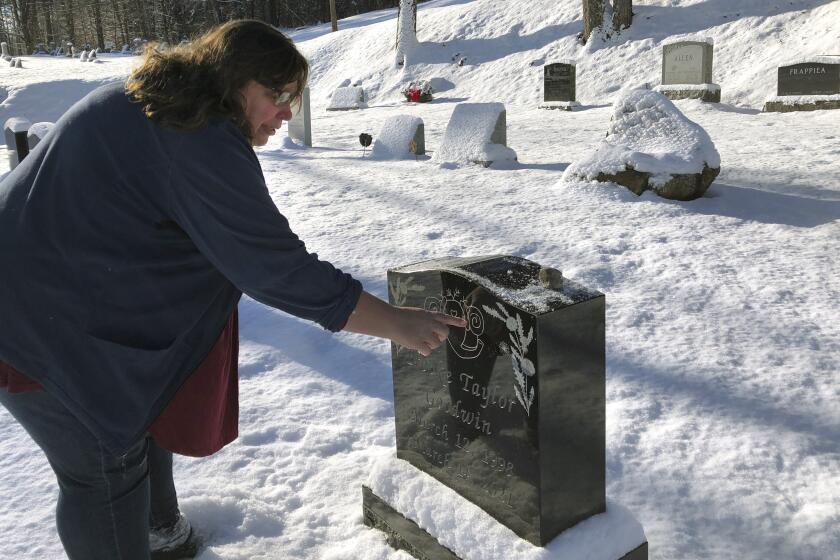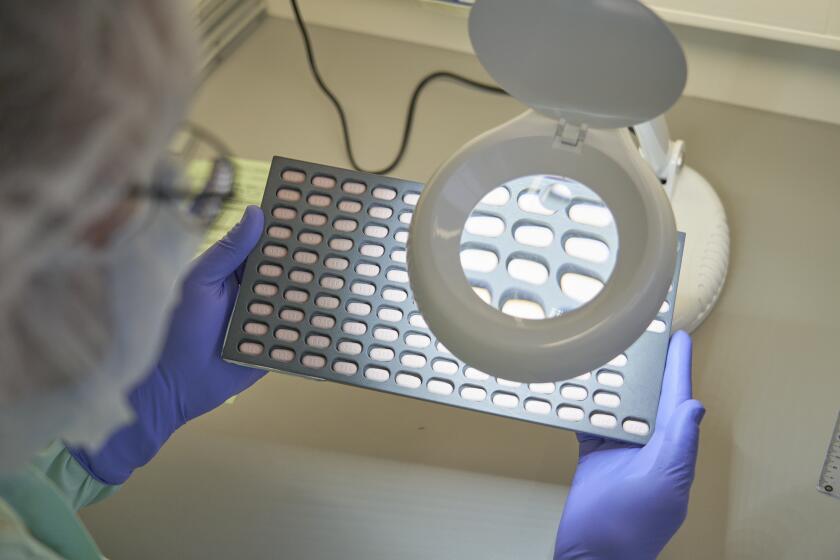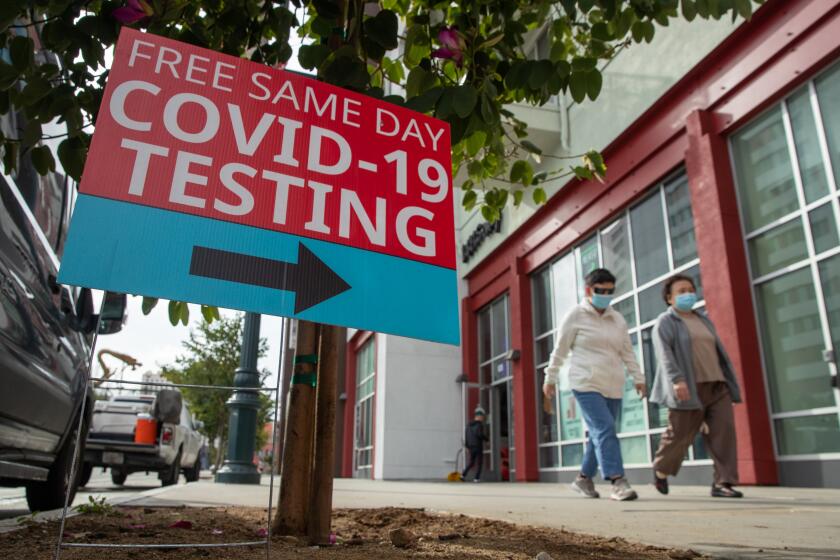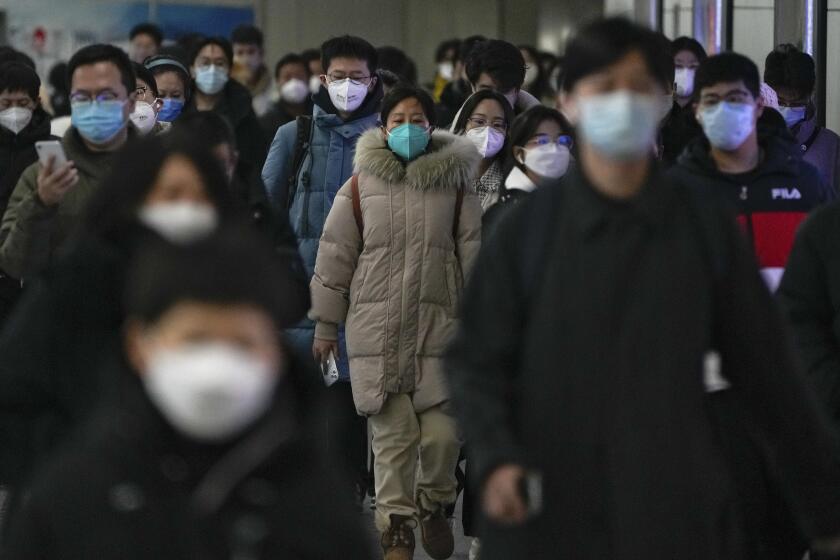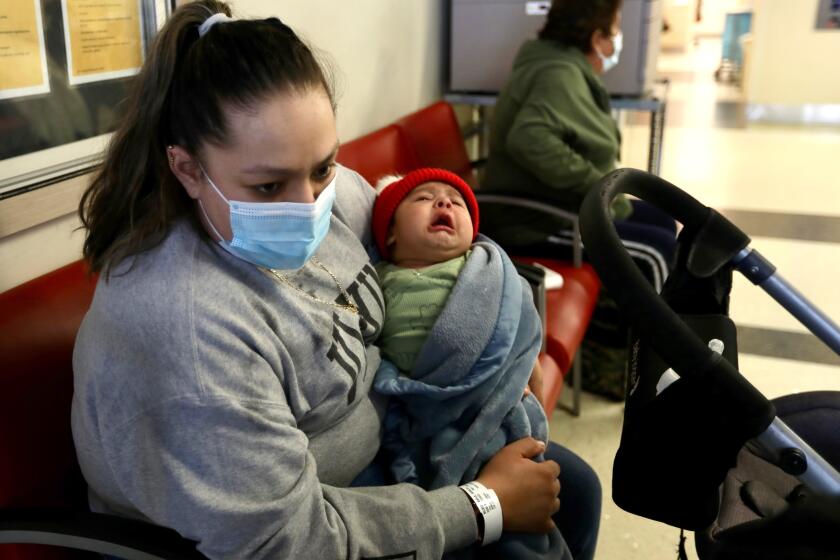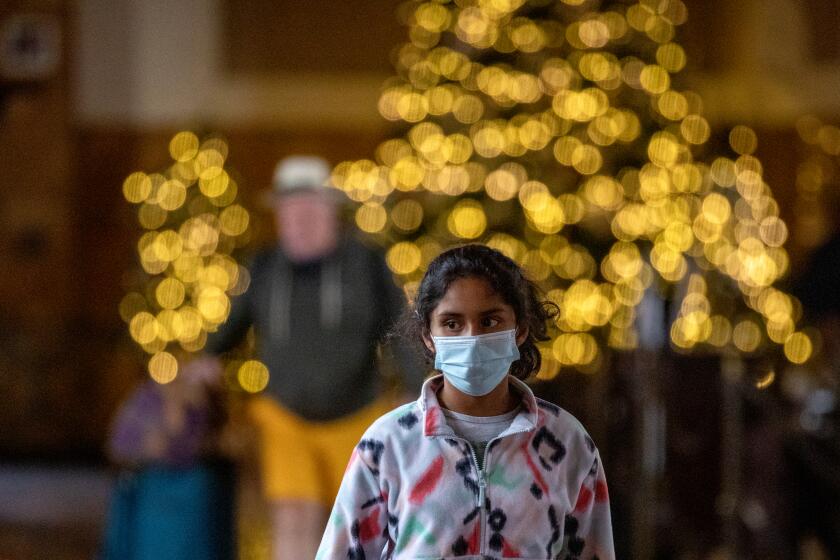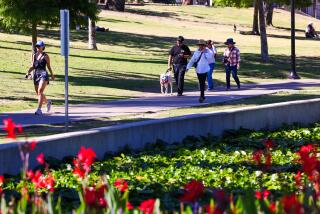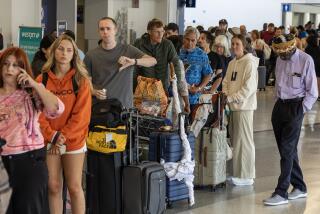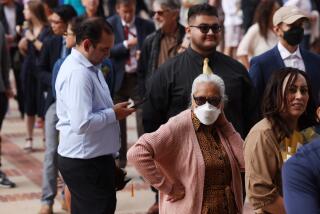Weekly L.A. County COVID deaths top summer surge. ‘There’s a whole lot of winter left’
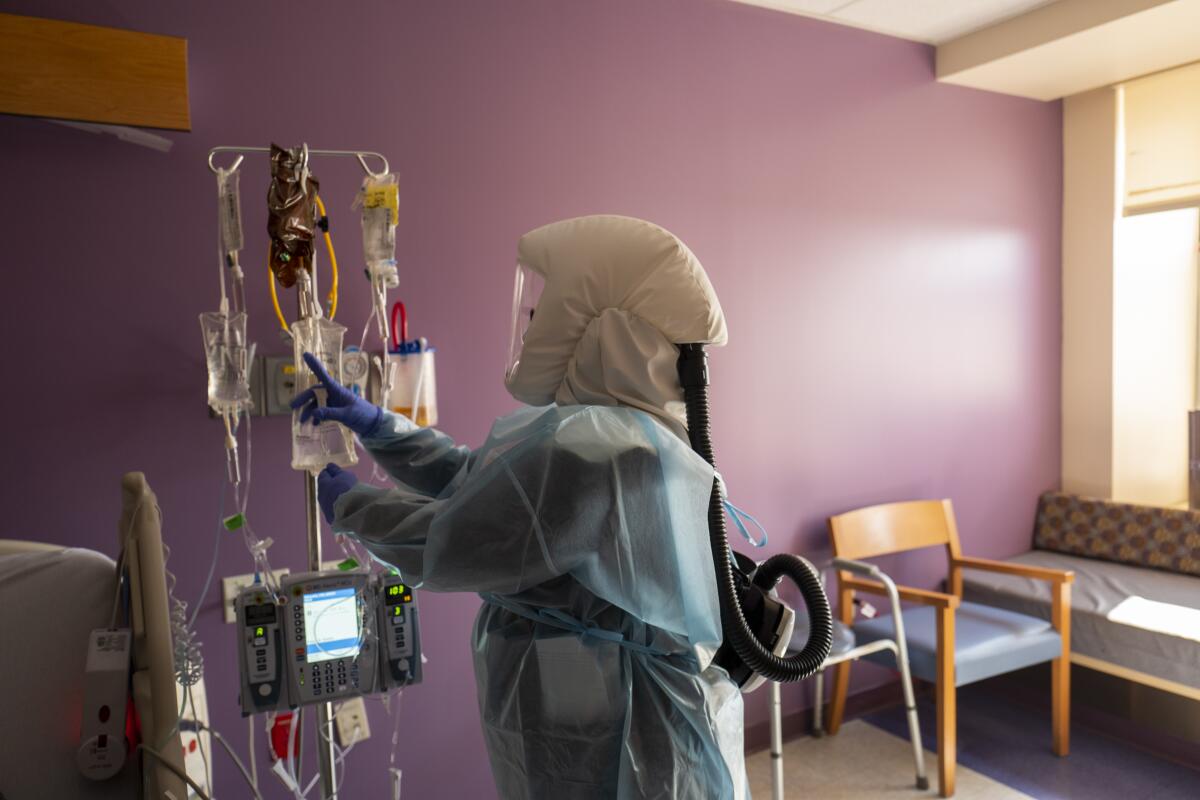
Weekly COVID-19 deaths in Los Angeles County are higher than at any point during the summer surge, illustrating the persistent toll the pandemic continues to exact amid concerns that cases could surge again this winter.
Over the weeklong period ending Thursday, the nation’s most populous county recorded 150 deaths — up 34% from the prior week’s tally of 112. Since Oct. 2, there have been 900 COVID-19 deaths reported countywide.
L.A. County’s COVID death toll number in the last week is nearly as high as that for all of California from flu in the past two and a half months. Since Oct. 2, 160 flu-related deaths have been reported statewide, including 31 in L.A. County.
The latest COVID-19 fatalities exceed all weekly counts from the summer Omicron surge, which peaked at 122 deaths for the seven-day period ending Aug. 6. It also was the deadliest week since late March, when the county was emerging from the initial winter Omicron wave. During last winter’s peak, the week ending Feb. 9, L.A. County recorded 513 COVID-19 fatalities.
“With every increase in cases for the last almost three years, a few weeks later, we’ve always seen a corresponding increase in death,” county Public Health Director Barbara Ferrer said Thursday. “It’s tragic, but we know that when there’s more transmission, more people end up being hospitalized, and sadly, some of the people with severe illness don’t make it.”
U.S. life expectancy, already declining since the onset of the pandemic, fell further in 2021, according to the CDC’s final accounting of death certificates.
Many officials and experts point out that L.A. County — and the country as a whole — is better positioned to weather a winter wave this year given the widespread availability of vaccines and access to effective therapeutics.
“Although we are surprised to see this big of an increase in this particular surge, if we were to look at this over the longer period of time, we would all recognize what great advances we’ve made because we’ve dramatically reduced the number of people who do die from COVID,” Ferrer said.
But the continued deaths illustrate that the pandemic is not over. And while coronavirus transmission has recently flattened, county officials remain concerned about a renewed surge following Christmas.
The risk of heightened transmission is also not borne equally — especially in a county as large and diverse as L.A.
Drugs such as Paxlovid and molnupiravir are free and widely available, but officials say doctors are not prescribing them as much as they should.
This month, roughly three-quarters of COVID-19 deaths have been residents age 70 and older, Ferrer said. Along with age, other risk factors include underlying health conditions, immunocompromised individuals or a lack of access to health-affirming resources, officials say.
L.A. County coronavirus cases are no longer sharply increasing, after doubling during a short span after Thanksgiving.
For the week ending Thursday, L.A. County reported an average of 2,624 cases a day, a 12% decline from the prior week. On a per capita basis, that’s 182 cases a week for every 100,000 residents. A rate of 100 or more is considered high.
L.A. County’s latest rate is still triple the 64 cases a week for every 100,000 residents that was reported in mid-October.
Coronavirus cases across California have declined, but remain elevated. For the week ending Tuesday, California recorded 114 cases a week for every 100,000 residents — a 33% decline from the prior week, but still double the rate from mid-October.
L.A. County coronavirus cases have stabilized, pushing off the prospect of a new indoor mask mandate, but a wave tied to holiday gatherings is possible.
Officials caution that those tallies are probably a significant undercount because of the widespread use of at-home rapid tests, the results of which are not reliably reported to authorities. Nationally, there have been estimates that infection rates could be five times the level of what’s been reported.
The number of coronavirus-positive patients hospitalized countywide has stabilized. As of Wednesday, 1,256 such patients were admitted in L.A. County — down a bit from two weeks prior.
That census — which includes both those hospitalized for COVID-19 and those who test positive after seeking care for some other reason — is still more than three times higher than it was in late October.
“Hospitalization rates are higher now than they were during the summer surge, reminding us that COVID-19 has not evolved into a benign virus,” Ferrer said.
But relief may be on the horizon. The California COVID Assessment Tool, published by the state Department of Public Health, estimates that the county’s effective transmission rate as of Monday was 0.87.
While that figure fluctuates daily, it’s been under 1.0 for more than a week. A rate below that mark means each infected individual is transmitting the virus to fewer than one person, on average, and indicates the virus’ spread is decreasing.
With the improvement in reported metrics, L.A. County has fallen back into the “medium” COVID-19 community level after two weeks in the “high” category. Those tiers, defined by the U.S. Centers for Disease Control and Prevention, are meant to assess the pressure the pandemic is exerting on a region’s hospitals.
Chinese cities are witnessing a wave of COVID-19 cases, with concerns growing that the government may be hiding the true toll of the virus.
But concerns remain that travel and gatherings over the winter holiday season could reverse that trend line and renew stress on the healthcare system.
That, officials say, is why it remains important to take precautions — such as staying up-to-date on vaccinations and wearing a well-fitting mask in public indoor settings.
“These steps are likely to contribute to lowering our case rate, and we can take moving into medium as a sign that these efforts to reduce COVID-19 are helping,” Ferrer said. “I encourage all of us to continue these steps during the holidays, since the risk does remain elevated.”
Such measures, along with regular hand-washing and staying home when you’re sick, can also help combat the strong resurgence of other respiratory viruses — namely flu and respiratory syncytial virus, or RSV.
Flu remains at high levels in California. Though activity is starting to decline in some areas, according to the CDC, it’s unclear how the remainder of the season will play out.
“As you’re preparing for the excitement of the upcoming winter holidays, now’s the perfect time to go out and get your COVID booster shot and your flu shot,” Dr. Mark Ghaly, the California health and human services secretary, said in a video statement Thursday. “It’s also a great time to make sure you have an ample supply of COVID tests.”
This year’s flu season is shaping up to be the worst in the last decade, UC San Francisco infectious diseases expert Dr. Peter Chin-Hong said at a campus town hall last week.
“COVID-19 has disrupted the normal cadence of the [other] viruses. So it’s really unpredictable what will happen with flu,” he said. “There’s a whole lot of winter left. Most times, flu peaks in January and February. Last year, we know that it had a very long tail and went all the way through summer, with a much lower level.”
The shortage is from rising cases of COVID-19, flu and RSV, as well as patients who have put off nonemergency care.
It’s not too late to get a flu shot if you haven’t already, Chin-Hong said. Nationwide, since October, there have been an estimated 9,300 flu deaths and about 28,000 reported COVID-19 deaths.
“Flu hospitalizations, particularly amongst the elderly, is expected to increase further. And that’s because the type of flu circulating right now, H3N2, is particularly notorious for causing senior deaths,” Chin-Hong said. “We’ve had very poor uptake of vaccines for flu.”
In better news, there is confidence that the worst of RSV is now past — at least on the national level.
However, the concentration of RSV in L.A. County’s wastewater “is now at the highest point we’ve seen this entire season,” Ferrer said.
One possible reason for the apparent disconnect is that while RSV is particularly dangerous for young children, it tends to be milder for healthy older children and adults. This means the county could be seeing elevated circulation but fewer individuals becoming sick enough to test or be hospitalized.
With respiratory diseases circulating widely in L.A. County, officials are urging residents to use a familiar tool to help thwart transmission: masks.
Orange County this week terminated its almost 2-month-old public health emergency related to RSV. Officials said that decision stemmed from federal action to expand resources to fight the virus, not local epidemiological trends.
The cancellation “is not an indication that there is a reduction in cases of infection or spread of respiratory disease,” Orange County Health Officer Dr. Regina Chinsio-Kwong said in a statement. “It indicates only that additional resources and support are now available.”
“RSV and flu cases continue to impact our pediatric hospital capacity,” she said. “This adjustment ... from our federal partners helps address local needs caused by the spread of non-COVID-19 illnesses, including RSV and the flu, and to address recent increased COVID-19 hospitalizations, which are further straining our healthcare and hospital systems.”
More to Read
Sign up for Essential California
The most important California stories and recommendations in your inbox every morning.
You may occasionally receive promotional content from the Los Angeles Times.
